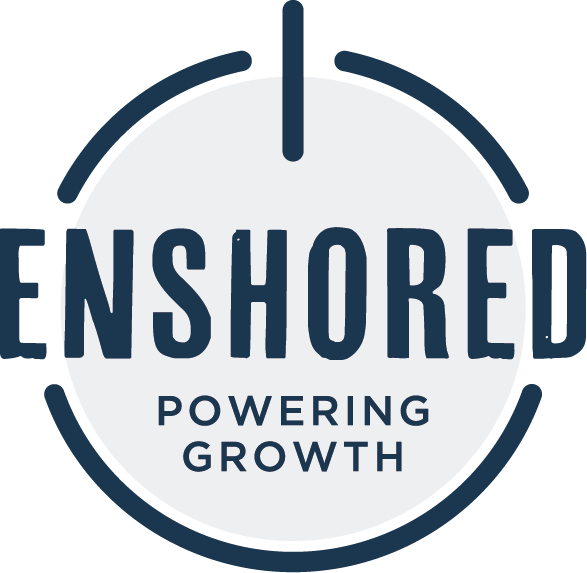Taking too long? Close loading screen.


Outsourcing AI training can help you overcome expertise gaps, reduce costs, and speed up your AI projects.
Are AI training challenges holding you back? Limited in-house expertise, high costs, and scalability issues can slow down your AI projects. Outsourcing AI training might be your solution!
This post explores the advantages of leveraging external specialists to enhance your AI development. From accessing advanced skills to managing costs and accelerating timelines, we’ll show you how outsourcing can transform your approach to AI training.
Training AI models comes with its unique set of hurdles. Recognizing these challenges is the first step toward overcoming them. Let’s dive into some of the most common issues faced in AI training.
AI models are inherently complex. They require meticulous design, algorithms, and constant tweaking to ensure they function as intended. This complexity can be overwhelming, especially for organizations without specialized expertise.
Data is the backbone of any AI model. However, ensuring high-quality, diverse data is often a significant challenge. Poor data can lead to inaccurate models. Additionally, gathering enough data to train the AI effectively can be time-consuming and costly.
Developing AI models in-house can be prohibitively expensive. From specialized hardware to software licenses and expert salaries, the costs add up quickly. Many companies find these financial demands unsustainable.
There’s a noticeable scarcity of AI talent. Hiring skilled professionals is competitive and costly. Moreover, existing teams might lack the deep expertise required to tackle advanced AI projects, resulting in slower progress and potential errors.
Finally, time is always a pressing factor. Developing AI models is a lengthy process that involves multiple stages, from data gathering to model testing. Meeting strict project deadlines can be challenging, especially without dedicated resources.
Understanding these challenges is crucial. By recognizing them, we can better strategize on how to overcome them. And that’s where outsourcing AI training comes into play.
When it comes to tackling the challenges of AI training, outsourcing offers numerous advantages. It allows us to leverage expertise, manage costs efficiently, and ensure flexibility. Let’s explore these benefits in detail.
Outsourcing AI training gives us access to specialists who are experts in their field. These professionals have extensive experience in designing and fine-tuning AI models. Leveraging their knowledge can significantly improve the quality and effectiveness of our AI projects.
These experts stay updated with the latest advancements in AI, ensuring that our models are built using cutting-edge techniques. This level of expertise is hard to match internally, especially if we lack a dedicated AI team.
Developing AI models in-house can be expensive. We need to invest in high-end hardware, software licenses, and specialized talent. Outsourcing helps us manage these costs more efficiently.
By working with an external partner, we can reduce upfront investments and pay for only the services we need. This approach allows us to stay within budget and allocate resources to other critical areas of our business.
Outsourcing offers the flexibility to scale our AI efforts up or down based on project requirements. Whether we need to ramp up quickly for a large project or scale down during slower periods, an external partner can accommodate these changes smoothly.
This flexibility ensures that we can handle varying workloads efficiently without compromising on quality or timelines.
Training AI models is a resource-intensive task. By outsourcing, we can free up our internal teams to focus on core business activities that drive growth and revenue. This shift allows us to concentrate on what we do best while leaving the complex AI tasks to the experts.
Our teams can devote more time to strategic initiatives, enhancing productivity and overall business performance.
Speed is crucial in today’s competitive landscape. Outsourcing AI training can significantly reduce the time it takes to develop and deploy AI models. External partners have the infrastructure and expertise to accelerate the training process, ensuring that we can bring our AI solutions to market faster.
By leveraging outsourcing, we can stay ahead of the competition and meet market demands promptly.
In summary, outsourcing AI training offers numerous benefits that help us navigate the complexities of AI development. From accessing specialized expertise to ensuring cost efficiency and faster time-to-market, outsourcing is a strategic move that can drive our success in the AI space.
Choosing the right outsourcing partner is crucial to overcoming challenges in AI training. The right partner can make a significant difference in the quality and efficiency of your AI projects. Here are some key criteria to consider.
First, evaluate the expertise and experience of potential partners. Look for firms with a strong track record in AI training and development. Their portfolio should showcase successful projects similar to yours.
This ensures that they have the necessary skills to handle your specific requirements.
Cultural compatibility is another important factor. Your outsourcing partner should align well with your company’s values and work culture. This alignment fosters better teamwork and smoother collaboration.
Consider their communication style, work ethic, and approach to problem-solving. A good cultural fit can greatly enhance the working relationship and overall project success.
Data security and compliance cannot be overlooked. Make sure your partner follows strict data security protocols and complies with relevant regulations. This is crucial to protect sensitive information and maintain trust.
Ask about their data handling practices, security certifications, and compliance history. This will give you confidence that your data is in safe hands.
Always check references and past project success. Speak to their previous clients to get an idea of their performance and reliability.
This will provide valuable insights into their strengths and potential challenges.
Effective communication and project management are key to a successful partnership. Ensure your partner has clear communication channels and robust project management practices.
Discuss how they will keep you updated on progress and handle any issues that arise. A transparent and organized approach can prevent misunderstandings and keep the project on track.
Selecting the right outsourcing partner involves careful consideration of these aspects. By taking the time to evaluate expertise, cultural compatibility, data security, references, and communication practices, you’ll find a partner who can help you overcome AI training challenges and achieve your goals.
When outsourcing AI training, effective collaboration is key to achieving success. By following a few best practices, we can ensure a smooth and productive partnership.
From the start, it’s crucial to have clear goals and expectations. We need to define what we want to achieve with our AI training project. This includes setting specific milestones and deliverables so everyone is on the same page.
A well-defined roadmap helps prevent misunderstandings and keeps the project on track. Clear goals provide direction and help measure progress effectively.
Communication is essential in any collaboration. Regular updates and progress reports keep everyone informed and aligned. We should establish a schedule for these updates to ensure consistent communication.
These practices help identify any issues early on and address them promptly.
Using the right tools can greatly enhance collaboration. Platforms like Slack, Trello, or Asana can streamline communication and project management. They provide a centralized place for sharing updates, tracking tasks, and storing important documents.
These tools make it easier for everyone to stay organized and focused on their responsibilities.
A strong working relationship is built on trust and mutual respect. Taking the time to understand our partner’s working style and establishing rapport can lead to better collaboration.
Regular check-ins and informal conversations help build this relationship. When both parties feel valued and respected, they are more likely to contribute effectively.
Feedback is a powerful tool for continuous improvement. We should encourage open and constructive feedback throughout the project. This helps identify areas for improvement and ensures that everyone is working towards a common goal.
By fostering a feedback loop, we can enhance the quality of our collaboration and the final output.
Incorporating these best practices can significantly improve our collaboration with an outsourcing partner. Clear goals, regular updates, effective tools, strong relationships, and a healthy feedback loop are essential for overcoming challenges in AI training.
While outsourcing AI training can bring numerous benefits, it’s important to be aware of potential risks and know how to mitigate them. By understanding these risks, we can take proactive steps to ensure a successful partnership.
One of the main risks in outsourcing AI training is the potential for intellectual property (IP) issues. We need to ensure that our proprietary data and models are protected. It’s crucial to have clear agreements in place that define IP ownership and usage rights.
Consider incorporating the following precautions:
Taking these steps helps safeguard our intellectual property and maintains our competitive edge.
Relying too heavily on an external partner can pose a risk to our business continuity. It’s important to maintain a balance and not become overly dependent on outsourced services. One way to avoid this is by building internal capabilities alongside outsourcing efforts.
We can achieve this by:
This approach ensures that we retain control and can continue operations smoothly.
Ensuring transparency and accountability is essential for a successful outsourcing relationship. We need to establish clear communication channels and robust reporting mechanisms to keep track of progress and address any issues promptly.
Key strategies include:
These practices help build trust and ensure everyone is aligned with the project’s goals.
Unexpected challenges and setbacks are inevitable in any project. It’s important to have contingency plans in place to handle these situations effectively. By anticipating potential issues, we can respond quickly and minimize disruptions.
Consider implementing:
These strategies help us stay resilient and keep the project on track despite any setbacks.
By being aware of these potential risks and taking proactive measures to mitigate them, we can ensure a successful and productive outsourcing partnership for our AI training needs.
Outsourcing AI training is a strategic move to overcome the hurdles of AI development. With specialized expertise, cost savings, and flexibility, outsourcing can improve the quality of your AI models and speed up your time-to-market. However, choosing the right partner, like Enshored, is crucial. Ensure they have the expertise, cultural fit, and reliable project management.
Effective collaboration and proactive risk management will lead to a successful partnership, helping you achieve your AI goals efficiently. Contact Enshored today to elevate your AI training.
Anticipating growth?
Access the tools, tech & team you need to scale globally.

Serious about scaling?
One call is all it takes to know if we’re a fit.
© 2024 Enshored · Privacy · GDPR · California · Cookies